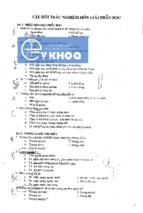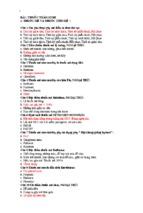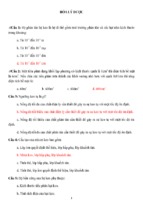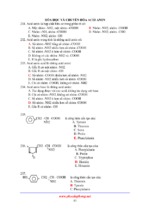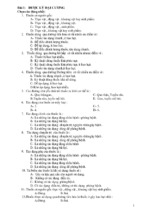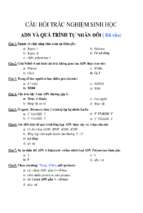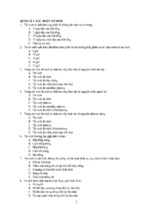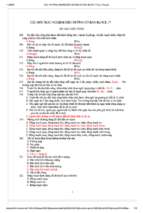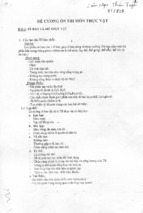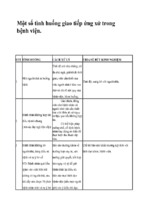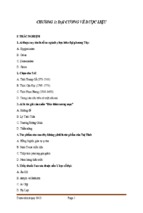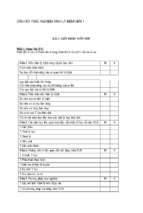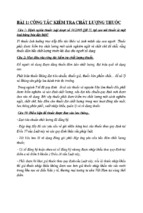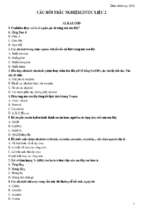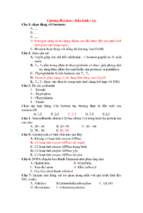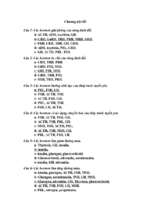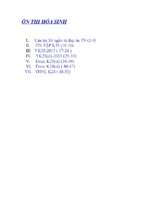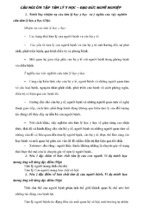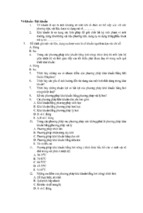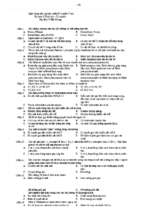2954_IFC 29/10/12 3:14 PM Page 1
Activate your FREE subscription today!
You’re three steps away from unlocking your FREE, 1-year subscription to
The Medical Language Lab, the new, interactive, online program
that ensures your mastery of the language of medicine.
1. Scratch off the shiny surface below to access your unique, personal code.
2. � ype the following address into your web browser: www.MedicalLanguageLab.com
T
3. Enter your access code.
Speak the language of medicine with confidence!
Use The Medical Language Lab with Medical Terminology Systems, 7th Edition
for a complete learning experience. The proven word-building techniques
and detailed illustrations in the book, plus engaging, interactive exercises online
at The MLL guide you from basic through advanced levels of proficiency.
If your access code has already been used, visit www.MedicalLanguageLab.com.
2954_FM_i-xxxii 06/11/12 10:14 AM Page i
A GUIDE TO…
Medical Terminology Systems
A Body Systems Approach, Seventh Edition
+ The Medical Language Lab
Master the language of medicine with ease!
Whatever your learning style—looking, listening, doing,
or a little bit of each—this popular word-building and
body-systems approach is designed just for you.
Increase your knowledge and retention.
A clear, concise word-building approach guides you stepby-step through the parts of words—roots, combining
forms, suffixes, and prefixes—before you learn the
vocabulary, avoiding tedious memorization.
Access even MORE
online at
•
•
•
•
Study Questions
Audio Tutorials and Pronunciations
Medical Record Activities
Animations
Just log onto DavisPlus.FADavis.com today!
Explore captivating detail.
Brilliant, full-color photographs and precise
illustrations bring important concepts to life.
Sharpen your skills.
Find handy mnemonic devices, crossword puzzles,
word scrambles, and drag-and-drop games on the
TermPlus CD-ROM* to build your confidence.
NEW!
*� �The TermPlus CD-ROM can be purchased
separately at www.FADavis.com.
Join the new, interactive
online experience!
Build your speaking confidence with
The Medical Language Lab! Learn the
language of medicine as you progress through
critical listening, speaking, and writing
activities. Look for the access code on the
previous page to gain exclusive access today.
www.MedicalLanguageLab.com
2954_FM_i-xxxii 06/11/12 10:14 AM Page ii
A unique blend of words, art, and technology…
Text
Biceps brachii
Brachioradialis
Orbicularis oculi
Masseter
Deltoid
Sternocleidomastoid
Brachialis
Triceps brachii
Trapezius
Triceps
brachii
Pectoralis
major
Brachioradialis
Rectus
abdominus
INCREASE YOUR PROFICIENCY
A proven word-building approach in the
text combined with detailed depictions of
the body make every concept crystal clear.
Gluteus
maximus
Biceps femoris
Gastrocnemius
Soleus
Achilles tendon
VISUALIZE MUST
-KNOW VOCABULARY
Brilliant, full-color illustrations and precise labels
leap from the pages to build your understanding.
TermPlus CD-ROM
PLAY GAMES
Crossword puzzles, word scrambles, drag-and-drop
activities, and much more on the TermPlus CD-ROM*
make learning fun.
*The TermPlus CD-ROM can be purchased
separately at www.FADavis.com.
2954_FM_i-xxxii 06/11/12 10:14 AM Page iii
Medical Language Lab
STAY ON TRACK
Progress Bars in The Medical Language
Lab let you know exactly how many
exercises you’ve completed in each lesson.
STUDY SMART
Your personal Study Plan in The Medical
Language Lab shows you the content areas
in which you need to devote the most study
time to master the language of medicine.
ADVANCE STEP-BY-STEP
Learning Lesson Pages in The Medical
Language Lab organize concepts from
simple to complex to help you develop
your medical language skills.
2954_FM_i-xxxii 06/11/12 10:14 AM Page iv
aber’s 22
T
®
brings meanings to life in
web, mobile, and print!
The choice is yours!
Taber’s 22 content any way you want it.
• FREE, 1-year subscription to
Taber’s Online, powered by
Unbound Medicine, for web access
• 33,000 audio pronunciations
• Animations and videos
• And much more!
Visit www.FADavis.com for details.
Look for Taber’s®
in the format of your choice
Available Formats
www.fadavis.com
2954_FM_i-xxxii 06/11/12 10:14 AM Page v
2954_FM_i-xxxii 06/11/12 10:14 AM Page vi
2954_FM_i-xxxii 06/11/12 10:14 AM Page vii
Barbara A. Gylys, MEd,
CMA-A (AAMA)
Professor Emerita
College of Health and Human Services
Coordinator of Medical Assisting Technology
University of Toledo
Toledo, Ohio
Mary Ellen Wedding, MEd,
MT(ASCP), CMA (AAMA),
CPC (AAPC)
Professor of Health Education
Judith Herb College of Education, Health
Science, and Human Service
University of Toledo
Toledo, Ohio
2954_FM_i-xxxii 06/11/12 10:14 AM Page viii
F. A. Davis Company
1915 Arch Street
Philadelphia, PA 19103
www.fadavis.com
Copyright © 2013 by F. A. Davis Company
Copyright © 2013 by F. A. Davis Company. All rights reserved. This product is protected by copyright. No part of it may be
reproduced, stored in a retrieval system, or transmitted in any form or by any means, electronic, mechanical, photocopying,
recording, or otherwise, without written permission from the publisher.
Printed in the United States of America
Last digit indicates print number: 10 9 8 7 6 5 4 3 2 1
Acquisitions Editor: T. Quincy McDonald
Developmental Editor: Brenna Mayer
Manager of Content Development: George Lang
Art and Design Manager: Carolyn O’Brien
As new scientific information becomes available through basic and clinical research, recommended treatments and drug
therapies undergo changes. The author(s) and publisher have done everything possible to make this book accurate, up to date,
and in accord with accepted standards at the time of publication. The author(s), editors, and publisher are not responsible for
errors or omissions or for consequences from application of the book, and make no warranty, expressed or implied, in regard to
the contents of the book. Any practice described in this book should be applied by the reader in accordance with professional
standards of care used in regard to the unique circumstances that may apply in each situation. The reader is advised always to
check product information (package inserts) for changes and new information regarding dose and contraindications before
administering any drug. Caution is especially urged when using new or infrequently ordered drugs.
Library of Congress Cataloging-in-Publication Data
Gylys, Barbara A.
Medical terminology systems : a body systems approach / Barbara A.
Gylys, Mary Ellen Wedding. — 7th ed.
p. ; cm.
Includes indexes.
ISBN 978-0-8036-2954-7
I. Wedding, Mary Ellen. II. Title.
[DNLM: 1. Terminology as Topic—Problems and Exercises. W 15]
610.1'4—dc23
2012037210
Authorization to photocopy items for internal or personal use, or the internal or personal use of specific clients, is granted by
F. A. Davis Company for users registered with the Copyright Clearance Center (CCC) Transactional Reporting Service,
provided that the fee of $.25 per copy is paid directly to CCC, 222 Rosewood Drive, Danvers, MA 01923. For those
organizations that have been granted a photocopy license by CCC, a separate system of payment has been arranged. The fee
code for users of the Transactional Reporting Service is: 9780803629547/13 0 $.25.
2954_FM_i-xxxii 06/11/12 10:14 AM Page ix
This Book Is Dedicated with Love
To my best friend, colleague, and husband, Dr. Julius A. Gylys, and to my children,
Regina Maria and Dr. Julius Anthony, and to my grandchildren, Andrew Masters,
Dr. Julia Halm, Caitlin Masters, Anthony Bishop-Gylys, Matthew Bishop-Gylys,
and the little one, Liam Halm
B.A.G.
To my loving grandchildren, Andrew Arthur Kurtz, Katherine Louise Kurtz,
Daniel Keith Wedding II, Carol Ann Estelle Wedding, Jonathan Michael Kurtz,
Donald Keith Wedding III, Emily Michelle Wedding, Katelyn Christine Wedding,
and David Michael Wedding
M.E.W.
2954_FM_i-xxxii 06/11/12 10:14 AM Page x
2954_FM_i-xxxii 06/11/12 10:14 AM Page xi
Acknowledgments
The authors would like to acknowledge the valuable contributions of F.A. Davis’s
editorial and production team who were responsible for this project:
• Quincy McDonald, Senior Acquisitions
Editor, who provided the overall design and
layout for the seventh edition. His vision and
guidance focused the authors at the onset of
the project, and his support throughout this
endeavor provided cohesiveness.
• Brenna H. Mayer, Developmental Editor,
whose careful and conscientious edits and
suggestions for the manuscript are evident
throughout the entire work. Her enthusiasm
and untiring assistance and support during this
project are deeply appreciated and the
authors extend their sincerest gratitude.
• George W. Lang, Manager of Content of
Development, who meticulously guided the
manuscript through the developmental and
production phases of the textbook.
• Margaret Biblis, Publisher, once again provided her support and efforts for the quality of
the finished product.
In addition, we wish to acknowledge the many
exceptionally dedicated publishing partners that
helped in this publication:
• Samantha Luceri, Administrative Assistant
• Liz Schaeffer, Ancillary Developmental Editor
• Kate Margeson, Illustrations Coordinator
• Bob Butler, Production Manager
• Carolyn O’Brien, Art and Design Manager
• Linda Van Pelt, Managing Editor
• Kirk Pedrick, Electronic Product Development Manager, Electronic Publishing
• Elizabeth Y. Stepchin, Developmental
Associate
We also extend our sincerest appreciation to
Neil Kelly, Executive Director of Sales, and his
staff of sales representatives whose continued efforts have undoubtedly contributed to the success
of this textbook.
xi
2954_FM_i-xxxii 06/11/12 10:14 AM Page xii
2954_FM_i-xxxii 06/11/12 10:15 AM Page xiii
Reviewers
The authors extend a special thanks to the clinical reviewers who read and edited
the manuscript and provided detailed evaluations and ideas for improving the
textbook.
Algie LaKesa Bond, MHA, RHIA, PMP
Clinical Assistant Professor
Health Information Management Program
Temple University
Philadelphia, Pennsylvania
Kim O’Connell-Brock, MS, ATC/L
Director of Clinical Rehabilitation
Human Performance Dance and Recreation Program
New Mexico State University
Las Cruces, New Mexico
Margaret J. Bower, BS, AMA
Adjunct Instructor
Allied Health Division
Central Pennsylvania College
Summerdale, Pennsylvania
Leata Rigg, RN, BScN, MN
Professor
Nursing Program
Northern College of Applied Arts & Technology
Timmins, Ontario, Canada
Bonnie L. Deister, EdD, BSN, RN, CMA-C, CLNC
Professor
Medical Assisting Program
College of the Redwoods
Eureka, California
Wren Stratton, BSN, RN
Instructor
Health Careers Program
Indian Capital Technology Center
Muskogee, Oklahoma
Cynthia Ferguson, RHIT
Instructor
Health Information Technology Program
Texas State Technical College
Sweetwater, Texas
Timothy A. Tolbert, PhD, ATC
Assistant Professor, Clinical Coordinator
Athletic Training Program
Marshall University
Huntington, West Virginia
Heather M. Grable, MS, RRT
Online Instructor
Health Sciences Program
Globe Education Network/Minnesota School of
Business and Ivy Tech Community College of Indiana
Greencastle, Indiana
xiii
2954_FM_i-xxxii 06/11/12 10:15 AM Page xiv
2954_FM_i-xxxii 06/11/12 10:15 AM Page xv
Preface
As medical terminology educators, we face common challenges. First, we must present a vast amount of fairly complex information to students of various learning levels
and abilities. Second, we need to impress upon them the importance of medical terminology as an essential tool of communication in the health-care industry. Finally,
we must help them apply what they have learned to the “real world of medicine.”
Building on the success of the sixth edition, which received the prestigious
McGuffey Longevity and Excellence Award from the Textbook Authors’
Association (TAA), Medical Terminology Systems: A Body Systems Approach, 7th edition, continues to live up to its well-established track record of presenting medical
word-building principles based on competency-based curricula. Because of the pedagogical success of previous editions, the seventh edition continues its structural
design as a textbook–workbook that complements all teaching formats, including traditional lecture, distance learning, and independent or self-paced study. The popular,
basic features of the previous edition have been enhanced and expanded. The body
systems chapters have been updated to include new diagnostic and therapeutic procedures as well as new pharmaceutical agents in current use. Many new, visually
impressive, full-color illustrations have been added to this edition. Artwork
throughout the book is specifically designed to present accurate and aesthetically
pleasing representations of anatomical structures, disease conditions, and medical
procedures. Illustrations augment course content in new and interesting ways and
help make difficult concepts clear. Two new learning activities have been incorporated in each body-system chapter.
All modifications and additions in the seventh edition are designed to aid in the
learning process and improve retention of medical terms. The following is a brief
summary of chapter content:
• Chapter 1 explains the techniques of medical
word-building using basic word elements.
• Chapter 2 categorizes major surgical, diagnostic, symptomatic, and grammatical suffixes.
• Chapter 3 presents major prefixes of position,
number and measurement, direction, and
other parameters.
• Chapter 4 introduces anatomical, physiological, and pathological terms. It also presents
combining forms denoting cellular and body
structure, body position and direction, regions
of the body, and additional combining forms
related to diagnostic methods and pathology.
General diagnostic and therapeutic terms are
described and provide a solid foundation for
specific terms addressed in the body-system
chapters that follow.
• Chapters 5 through 16 are organized according to specific body systems and may be
taught in any sequence. These chapters include
key anatomical and physiological terms; basic
anatomy and physiology; a body systems connections table; combining forms, suffixes, and
prefixes; pathology; diagnostic, symptomatic,
and related terms; diagnostic and therapeutic
procedures; pharmacology; abbreviations;
learning activities; and medical record
activities. All activities allow self-assessment
and evaluation of competency.
• Appendix A: The Answer Key contains answers
to each learning activity to validate proficiency
and provide immediate feedback for student
assessment. Although the answer key for the
terminology section of each medical record is
not included in this appendix, it is available to
adopters in the Activity Pack.
• Appendix B: Common Abbreviations and
Symbols include an updated, comprehensive
list of medical abbreviations and their meanings, an updated summary of common symbols, and an updated list of “do-not-use”
abbreviations.
• Appendix C: The Glossary of Medical Word
Elements contains alphabetical lists of medical
word elements and their meanings. This appendix presents two methods for word–element
indexing—first by medical word element, then
by English term.
• Appendix D: The Index of Genetic Disorders
lists genetic disorders presented in the textbook.
• Appendix E: The Index of Clinical, Laboratory,
and Imaging Procedures lists radiographic and
other diagnostic imaging procedures presented
in the textbook.
xv
2954_FM_i-xxxii 06/11/12 10:15 AM Page xvi
xvi
Preface
• Appendix F: The Index of Pharmacology
lists medications presented in the
textbook.
• Appendix G: The Index of Oncological Disorders lists oncological disorders presented in
the textbook.
Medical Language Lab
Now included in every new copy of Medical Terminology Systems: A Body Systems Approach, 7th edition, is access to the ultimate online medical terminology resource for
students. The Medical Language Lab is a rich learning environment utilizing proven
language development methods to help students become effective users of medical
language. To access the Medical Language Lab, students simply go to http://
www.medicallanguagelab.com and redeem the access code provided in their new
copies of Medical Terminology Systems: A Body Systems Approach, 7th edition.
Each lesson in the Medical Language Lab teaches the student how to listen
critically for important terms, respond to others using medical terminology, and
generate their own terminology-rich writing and speech. By following the activities in each lesson, students graduate from simple memorization to becoming
stronger users of medical language.
In addition to critical listening, response, and generation exercises for each
lesson, students are supplied with a wide variety of practice activities, which
help them to solidify their recall of key terms from the chapter, as well as audio
glossary features where students can hear words pronounced and used properly
in context.
Designed to work seamlessly with Medical Terminology Systems: A Body Systems
Approach, 7th edition, each activity in the Medical Language Lab has been crafted
with content specific to the textbook. Every chapter in Medical Terminology Systems: A Body Systems Approach, 7th edition, has a corresponding lesson in the Medical Language Lab. These pedagogical features help students develop confidence,
and every activity on the Medical Language Lab is relevant and useful in helping
them understand their textbook.
Instructors benefit from a powerful, yet easy to understand instructor’s page,
which allows them to decide which chapters and activities will be available to
their students. Instructors also control how student scores are reported to them,
either through the native Medical Language Lab grade book, or reported to
their own BlackBoard, Angel, Moodle, or SCORM-compliant course management solution.
DavisPlus Online Resource Center
Although the study of medical terminology demands hard work and discipline,
various self-paced activities offer interest and variety to the learning process. A
multiplicity of activities and resources are available to adopters of the textbook on
DavisPlus Instructor and Student Online Resource Center. The Online Resource
Center is designed to help teachers teach and students learn medical terminology
in an exciting, challenging, and effective fashion. Visit http://davisplus.fadavis.com
for the Instructor and Student Online Resource Center to explore the various
ancillaries available for instructors and students.
Instructor Online Resource Center
The DavisPlus Instructor Online Resource Center provides many updated, innovative instructional activities. These activities make teaching medical terminology
easier and more effective. Teachers can use the supplemental activities in various
educational settings—traditional classroom, distance learning, or independent or
2954_FM_i-xxxii 06/11/12 10:15 AM Page xvii
Preface
xvii
self-paced studies. The many ancillaries help instructors maximize the benefits of
the textbook and include the following:
• Electronic test bank with ExamView Pro testgenerating software
• PowerPoint presentations for each chapter
• Searchable image bank
• Printable Activity Pack
• Resources in Blackboard, Angel, Moodle, and
SCORM formats
Electronic Test Bank
This edition offers a powerful ExamView Pro test-generating program that allows
you to create custom-made or randomly generated tests in a printable or online
format from a test bank of more than 2,500 test items. This expanded test bank
contains over twice as many questions as in the previous edition.
PowerPoint Presentations
Bring the book to life in the classroom with the accompanying Lecture Note
PowerPoint presentations. Each chapter has an outline-based presentation
consisting of a chapter overview; main functions of the body system; and selected
pathology, vocabulary, and procedures. Full-color illustrations from the book and
in-class assessment activities are included.
Image Bank
The image bank contains all illustrations from the textbook. It is fully searchable
and allows users to zoom in and out and display a JPG image of an illustration that
can be copied into a Microsoft Word document or PowerPoint presentation.
Activity Pack
The Activity Pack has been expanded to meet today’s instructional needs and now
includes the following:
• Suggested Course Outlines. Course outlines are
• Supplemental Medical Record Activities. The
provided to help you plan the best method of
covering material presented in the textbook. A
newly designed course outline is provided for
textbooks packaged with TermPlus, the
completely revised and updated interactive
software. Now it will be easy to correlate
instructional software with textbook chapters.
• Student and Instructor-Directed Activities. These
comprehensive teaching aids have been updated,
and new ones have been added for this edition.
They offer an assortment of activities for each
body-system chapter. Instructors can use these
activities as course requirements or supplemental
material. In addition, they can assign activities
as individual or collaborative projects. For group
projects, peer evaluation forms are included.
• Community and Internet Resources. This resources
section provides an expanded list of resources,
including technical journals, community organizations, and Internet sites to complement course
content.
supplemental medical record activities have
been updated and include student activities
that complement and expand information presented in the body-system chapters. As in the
textbook, these activities use common clinical
scenarios to show how medical terminology is
used to document patient care. Medical terms,
their pronunciations, and a medical record
analysis are provided for each record, along
with an answer key. In addition, each medical
record highlights a specific body system and
correlates it with a medical specialty. Medical
records can be used for various activities,
including oral reports, medical coding, medical
transcribing, or individual assignments.
• Pronunciations and Answer Keys. We’ve continued to provide an answer key for the medical
record research activities in the textbook. This
key should prove helpful for grading or for
class presentations.
2954_FM_i-xxxii 06/11/12 10:15 AM Page xviii
xviii
Preface
Student Online Resource Center
The DavisPlus Student Online Resource Center includes many user-friendly activities to help students reinforce material covered in the textbook. At the same
time, it is structured to make learning medical terminology an exciting, challenging activity. Resources include medical record activities, audio tutorials, and
animations.
Medical Record Activities
Health-care providers in hospitals, medical centers, and private practice facilities dictate various types of medical reports that become part of the medical record. Included
are chart notes, history and physical examinations, progress notes, consultation reports, operative reports, discharge summaries, and diagnostic studies. Samples of
these types of reports are included in the medical records activities found in the bodysystem chapters (Chapters 5 to 16). To reinforce these activities, the student online
resource center includes a medical records activities section in which the key terms in
each report are underlined. As students click the underlined terms, they hear the correct pronunciation of each term. All reports are styled following the guidelines established by the American Association of Medical Transcription (AAMT). This formatting provides an opportunity for students to learn correct styling of various types of
medical reports.
Audio Tutorials
The audio tutorials are developed from the “Medical Word Elements” sections of
the body-system chapters (Chapters 5 to 16). It is designed to strengthen spelling,
pronunciation, and understanding of selected medical terms. In addition to teaching
combining forms and pronunciations, it is also useful for students in beginning transcription and medical secretarial courses. They can develop transcription skills by
typing each word as it is pronounced. After typing the words, the student can correct
spelling by referring to the textbook or a medical dictionary.
Animations
Several animations are included to help students better visualize complex concepts. For example, one animation explores the pathology of gastroesophageal reflux disease (GERD). Another shows the various stages of pregnancy and delivery.
These innovative tools help students better understand important processes and
procedures as they learn the associated medical terminology.
Other Student Ancillaries
TermPlus
TermPlus continues to be a powerful, interactive CD-ROM program offered with
some texts, depending on the version that has been selected. TermPlus is a competency-based, self-paced, multimedia program that includes graphics, audio, and
a dictionary culled from Taber’s Cyclopedic Medical Dictionary, 22nd edition. Help
menus provide navigational support. The software comes with numerous interactive learning activities, including:
• Anatomy Focus
• Tag the Elements (drag-and-drop)
• Spotlight the Elements
• Concentration
• Build Medical Words
• Programmed Learning
• Medical Vocabulary
• Chart Notes
• Spelling
• Crossword Puzzles
• Word Scramble
- Xem thêm -

